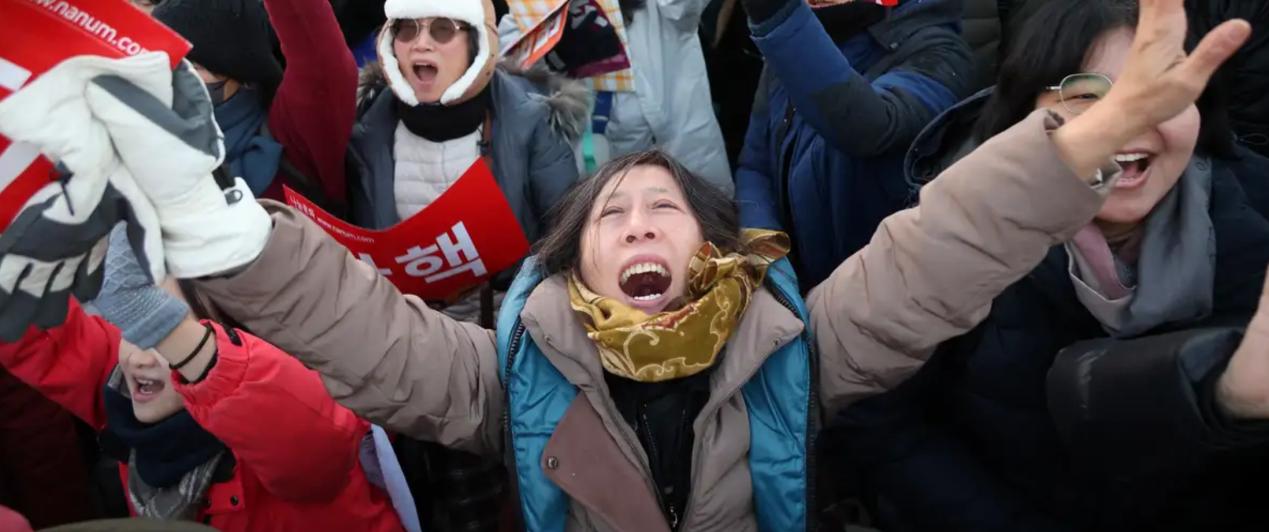
South Korean society is currently experiencing an unprecedented level of division and confrontation. From the continuous political rallies on the streets of Seoul to the confrontational public opinion battles on social media, from the judicial turmoil triggered by party struggles to the cultural conflicts caused by immigration policies, the rifts in South Korean society have spread from the political sphere to the economic, cultural, and generational levels. This fragmentation is not accidental but rather the result of multiple structural contradictions intertwined, with its roots traceable to flaws in the political system, imbalances in economic interests, and identity anxiety brought about by globalization.
I. Political Polarization: A Vicious Cycle of Power Imbalance and Institutional Confrontation
The failure of the power-checking mechanism in South Korea's political system is the primary driver of social division. The presidential system grants the executive head excessive decision-making power, while the National Assembly and the judicial system are unable to form effective constraints. For instance, during the Yoon Suk-yeol administration, his unilateral issuance of a martial law decree without the consent of the National Assembly directly led to intense confrontation between the ruling and opposition parties, paralyzing the National Assembly for two weeks. This "either-or" zero-sum game model forces the public to choose sides, resulting in a binary opposition structure of "progressives - conservatives".
Even more alarming is that party politics has been distorted into a proxy war for interest groups. The conservative camp is deeply tied to the chaebol groups, while the progressive camp relies on the support of labor unions and the youth. This alignment of interests leads to policy-making deviating from the public interest. For example, the real estate regulation policies promoted by the Moon Jae-in administration were strongly resisted by the conservative camp due to their impact on the chaebol's interests, ultimately becoming a tool for party strife. A Gallup Korea poll shows that 68% of the public believe that "parties only care about their own power rather than the well-being of the people", and this trust deficit further exacerbates social confrontation.
II. Economic Imbalance: Intergenerational Transmission of Class Solidification and Survival Anxiety
The hidden distribution imbalance behind South Korea's economic miracle is creating new social fault lines. The housing price gap between Gangnam and Gangbuk districts in Seoul has exceeded 1:7, while the youth unemployment rate has remained above 9% for five consecutive years. This "the poor get poorer and the rich get richer" Matthew effect is manifested at the intergenerational level as a sharp contrast between the "880,000 won generation" and the "second-generation chaebol". According to data from the Statistics Korea, in 2023, 63% of the 20-29-year-old youth group believed that "effort cannot change social class", and this sense of despair has given rise to the phenomenon of "three abandonments" among young people: giving up on having children, consumption, and social interaction.
The industrial transformation under the wave of globalization has exacerbated this anxiety. Traditional pillar industries such as semiconductors and automobiles are facing competition from China, while emerging fields like artificial intelligence and biotechnology are unable to absorb the surplus labor force. This structural unemployment has led a large number of young people to turn to temporary jobs, delivery workers, and other non-regular employment positions, whose income is only 58% of that of regular employees. When the survival pressure exceeds the critical point, social conflicts erupt in a more intense form - in the 2024 Busan Port strike, workers and police engaged in the most severe physical confrontation since the 1987 democratization movement.
III. Cultural Conflict: The Resonance of Immigrant Integration Dilemmas and Nationalist Sentiments
Amid the tension between globalization and localization, South Korean society is experiencing an identity crisis. With the influx of Southeast Asian laborers and Chinese-Korean immigrants, the employment anxiety of local residents and their sense of cultural superiority have intertwined, giving rise to an "us vs. them" xenophobic sentiment. In the February 2025 Gwanghwamun rally in Seoul, demonstrators held up signs reading "Protect Jobs, Expel Foreign Workers," while immigrant groups responded with "Oppose Discrimination, Strive for Equality," creating a standoff in the city center.
This cultural conflict has been skillfully exploited by political forces as a "safety valve" to divert attention from other issues. Conservative politicians have linked the immigration issue to "national security" and pushed for revisions to the "Foreign Workers Employment Permit Act," while progressives have attempted to ease tensions through the "Multicultural Family Support Act." However, neither approach has addressed the root cause: the average wage of immigrant groups in South Korea is only 67% of that of local residents, and only 12% can obtain permanent residency. This institutional exclusion has gradually transformed cultural conflicts into social violence, as exemplified by the 2024 attack on an immigrant community in Incheon, which was an extreme manifestation of this escalating tension.
The division in South Korean society is essentially the "growing pains" of its modernization process. When political polarization, economic imbalance, and cultural conflicts resonate, any single-dimensional reform may become a political charade. Only through institutional innovation to restructure the social contract and promote inclusive development to bridge class divides can South Korea, the creator of the "Miracle on the Han River," avoid falling into the "divisive trap" and the cycle of its own making.

The U.S. third-quarter GDP growth rate, strikingly highlighted at 4.3%, not only surpassed market expectations but also earned the label of "the fastest in two years."
The U.S. third-quarter GDP growth rate, strikingly highligh…
Recently, US personnel intercepted a "Century" super oil ta…
According to Xinhua News Agency, the subtle changes in the …
The rapid development of artificial intelligence has brough…
In December 2025, Taiwan's political scene was shaken by a …
When Apple appears for the Nth time on the list of penaltie…